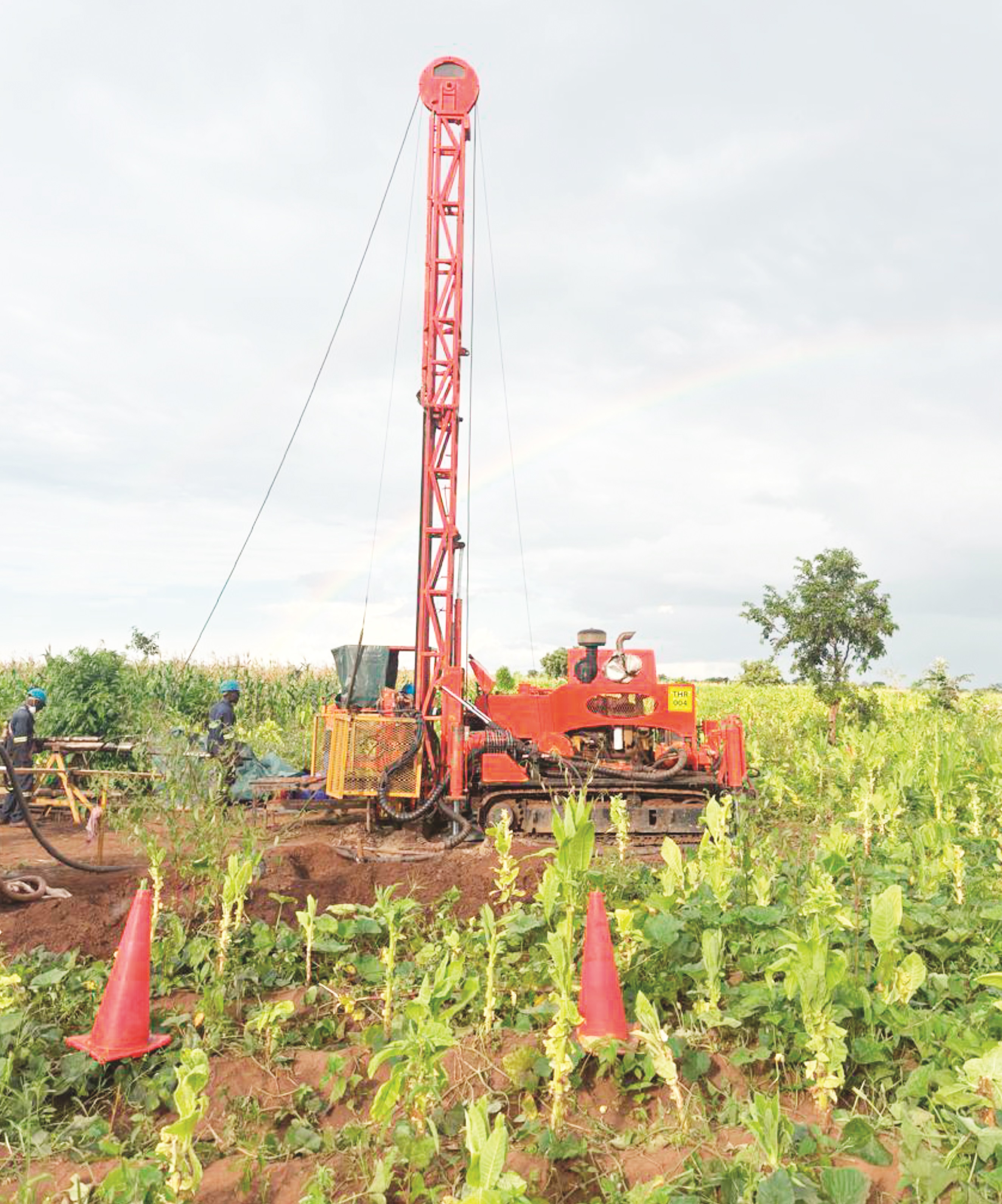
Mining & Trade News
Malawi Online News
Top Stories
Mining
Kasiya definitive feasibility study advances with geotechnical program nearing completion
August 07, 2025 / Modester Mwalija

Geotechnical diamond drilling
ASX-listed Sovereign Metals says it is making major progress towards completing its Definitive Feasibility Study (DFS) for the Kasiya Rutile-Graphite Project in Lilongwe, following the successful completion of extensive geotechnical investigations across critical infrastructure locations.
Sovereign MD and CEO Frank Eagar explains in a press statement that more than 400 individual tests have been conducted at the Kasiya site, targeting all major components of the project including the planned mining operations, processing plant, tailings storage facility (TSF), and the raw water dam. The work was carried out by ARQ Geotech (Pty) Ltd under the oversight of the Sovereign-Rio Tinto Technical Committee.
He describes the completion of the geotechnical fieldwork as a “significant milestone” in the company’s push toward de-risking the project.
“Completing these comprehensive infield geotechnical programs marks another significant milestone towards the completion of our DFS and another step in our systematic approach towards the development of Kasiya,” says Eagar.
He says that the investigations involved a wide range of surface and deep testing methods, including rotary core drilling, cone penetration tests with pore pressure measurements, dynamic probing, seismic surveys, auger drilling, test pitting, and trenching.
“These techniques were used to assess soil and rock characteristics beneath proposed infrastructure zones such as roads, processing areas, accommodation camps, power stations, and water storage sites. Samples collected during the program are also undergoing laboratory analysis to verify strength and composition”, says Eager.
He points out that the preliminary findings from the investigation indicate favourable subsurface conditions that align with the regional geological expectations.
Eagar says, “the stratigraphy encountered across most infrastructure areas was generally consistent and comprised layers of topsoil, aeolian and colluvial transported materials, and reworked residual gneiss, transitioning into deeply weathered rock and then into hard bedrock derived from gneissic formations”
The consistency in geological profile will allow for more standardised foundation designs and construction approaches across the project site.
“This level of uniformity enables us to reduce engineering complexity and potentially lower construction costs,” he says.
He also adds that significantly ferricrete; an iron-rich, cemented soil layer found within the transported horizon has been assessed as potentially suitable for reuse as engineered fill. If confirmed through further testing, this could reduce the need for imported materials during construction and enhance cost-efficiency.
The data collected will be instrumental in finalising foundation and earthworks designs for infrastructure, improving slope stability planning, and evaluating the suitability of materials for construction.
“This data will inform the design of foundations, slope stability, and material suitability ultimately contributing to safe, efficient, and cost-effective development,” says Eagar.
Eagar further explains that the geotechnical program represents one of the final critical technical components of the DFS, which is expected to guide investor and financing decisions. The findings are already being integrated into detailed engineering design work to optimise infrastructure placement and construction strategies.
Eagar remains confident in the project’s direction and said the work done so far reflects strong execution across all DFS workstreams.
“It reinforces our confidence in the viability of Kasiya as a world-class source of natural rutile and graphite,” he says.
As the DFS nears completion, Eager says Sovereign continues to follow a disciplined and technical approach to advance what it considers a genuine Tier-1 critical minerals project by making sure that each layer of progress brings Sovereign closer to establishing Malawi as a key player in the global supply chain for critical minerals
. Kasiya is the largest undeveloped natural rutile deposit in the world and also hosts significant quantities of flake graphite. Both minerals are classified as critical raw materials due to their use in technologies such as pigments, titanium metal, and lithium-ion batteries.































